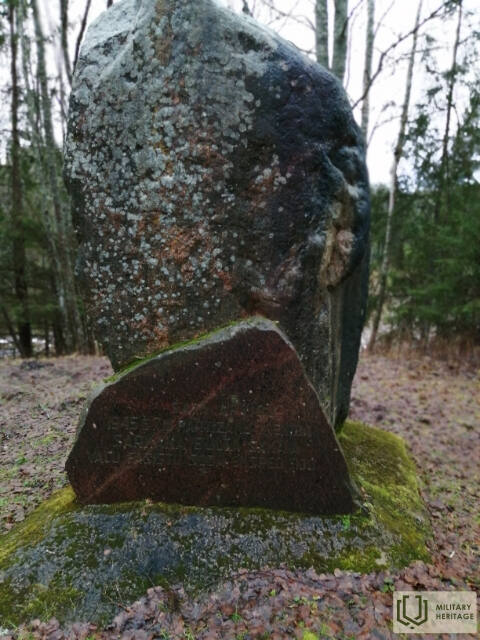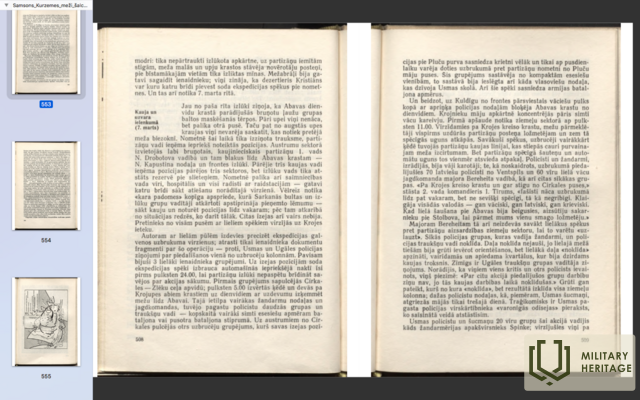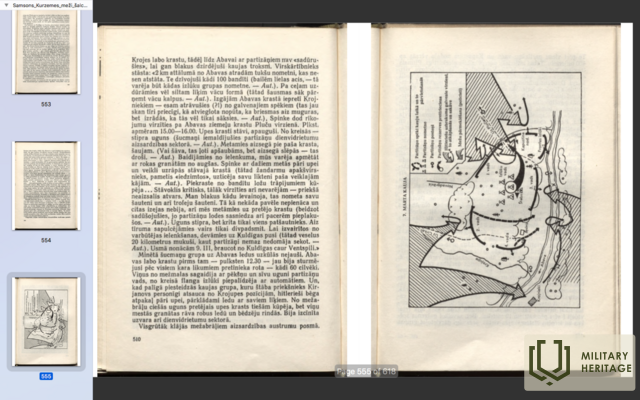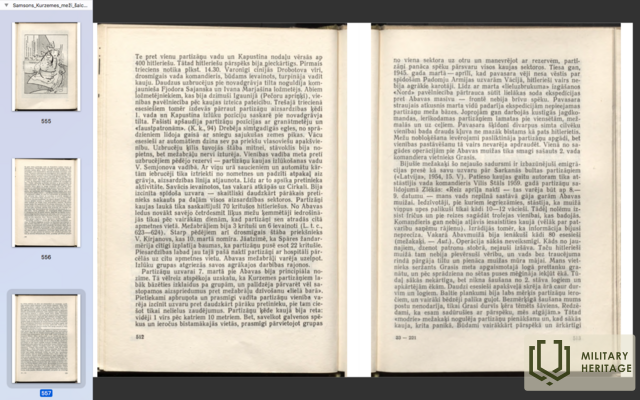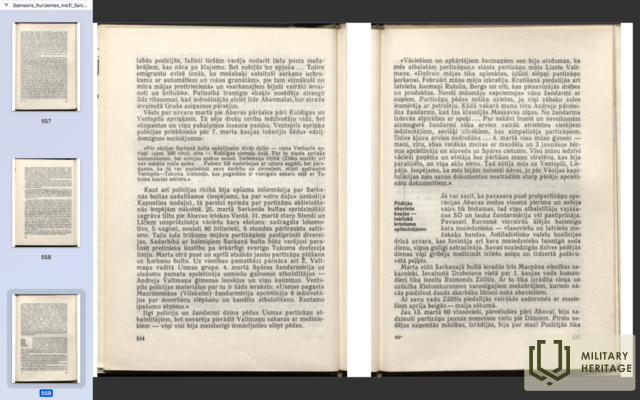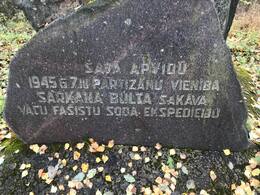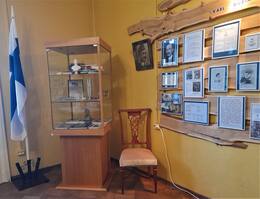Vilio Samsono aprašymas apie „Raudonųjų strėlių“ mūšį su vokiečių policijos daliniais 1945 m. kovo 7 d.
1945 m. kovo 7 d. vokiečių kariuomenė apsupo ir bandė sunaikinti „Raudonųjų strėlių“ partizanų stovyklą. Vilis Samsonas savo knygoje, kurią 1974 m. išleido Rygos leidykla „Zinātne“, aprašo šio mūšio eigą.
„Mūšis ir pergalė apgulties metu (kovo 7 d.)“
Vilis Samsonas „Kuržemės miškai ūžia“
Susijusi laiko juosta
Susijusios vietos
Sovietų partizanų būrio „Raudonoji strėlė“ atminimo akmuo
Sovietų partizanų dalinys buvo suformuotas 1944 m. rugsėjo 30 d., kai 19 vokiečių 283-iojo policijos bataliono kareivių, vadovaujamų Vladimiro Semenovo, dezertyravo su ginklais. Batalionas buvo suformuotas 1943 m. iš Latgalos regiono savanorių ir dalyvavo vokiečių okupacinės valdžios antipartizaninėse operacijose Latvijos ir Baltarusijos teritorijoje.
Šis dalinys buvo pavadintas „Semjonovo daliniu“ jo vado garbei ir tik karo pabaigoje priėmė „Raudonųjų strėlių“ pavadinimą, kurį po Antrojo pasaulinio karo jau skleidė sovietinė propaganda. Iki 1944 m. gruodžio mėn. dalinyje buvo 300–400 partizanų. Dauguma jų buvo pabėgę Raudonosios armijos kareiviai, buvę legionieriai, įskaitant kovotojus, likusius po generolo Kurelio grupės sunaikinimo. Nors tuo metu Kuržemėje veikė daug Raudonosios armijos žvalgybos grupių, jos vengė glaudaus bendradarbiavimo, nes partizanų būrio vado ir jo pagrindinio branduolio – vokiečių policijos gretose – veikla buvo pernelyg įtartina. „Raudonosios strėlės“ veikla buvo gana prastai organizuota ir labiau orientuota į karo pabaigos laukimą. Savo veiklos metu ji vykdė platų vietos gyventojų terorizavimą.
Vladimiras Semionovas, pirmasis „Raudonosios strėlės“ vadas, nuskendo 1944 m. gruodžio 10 d. naktį, bandydamas iki kelių perbristi patvinusią Abavos upę. Jo kūnas buvo rastas ir palaidotas tik 1945 m. pavasarį. Jis buvo perlaidotas Kuldygoje 1961 m.
Paminklas stovi „Raudonosios strėlės“ ir kitų toje vietovėje buvusių partizanų stovyklų (apie 50–70 žmonių) vietoje, kurias 1945 m. kovo 7 d. apsupo ir bandė sunaikinti vokiečių kariuomenė.
Aprikių muziejaus kolekcijos ir raudonųjų partizanų veiklos zonos
Aprikių dvare įsikūręs Aprikių muziejus, kurio ekspozicijos pasakoja apie senovės regiono istoriją. Muziejuje eksponuojama ekspozicija apie Suomijos karinį veikėją Karlą Gustavą Mannerheimą – 175 muziejaus eksponatai, interaktyvus stendas „KGMannerheimas ir Apriki“ (trimis kalbomis – latvių, anglų ir suomių) su 6 skyriais – apie Aprikių dvarą, apie KGMannerheimą kaip vadą Žiemos kare, apie Suomijos laisvės mūšių vadą ir apie jo ryšį su Aprikais.
Muziejuje taip pat eksponuojami Antrojo pasaulinio karo eksponatai su vokiečių ir Raudonosios armijos simbolika, taip pat žemėlapis (raudonųjų partizanų veiklos zonos) ir raudonųjų partizanų aprašymai.
Aprikku dvaro (Apprikken) pastatų barokinis ansamblis iš pradžių buvo suformuotas prie Alokste upės XVIII a. XX a. pradžioje. Dvaro savininkas buvo Carlas Gustavas Mannerheimas, vėliau tapęs Suomijos prezidentu ir žinomas kaip legendinės Mannerheimo linijos – įtvirtinimų sistemos Žiemos karo metu – autorius.




